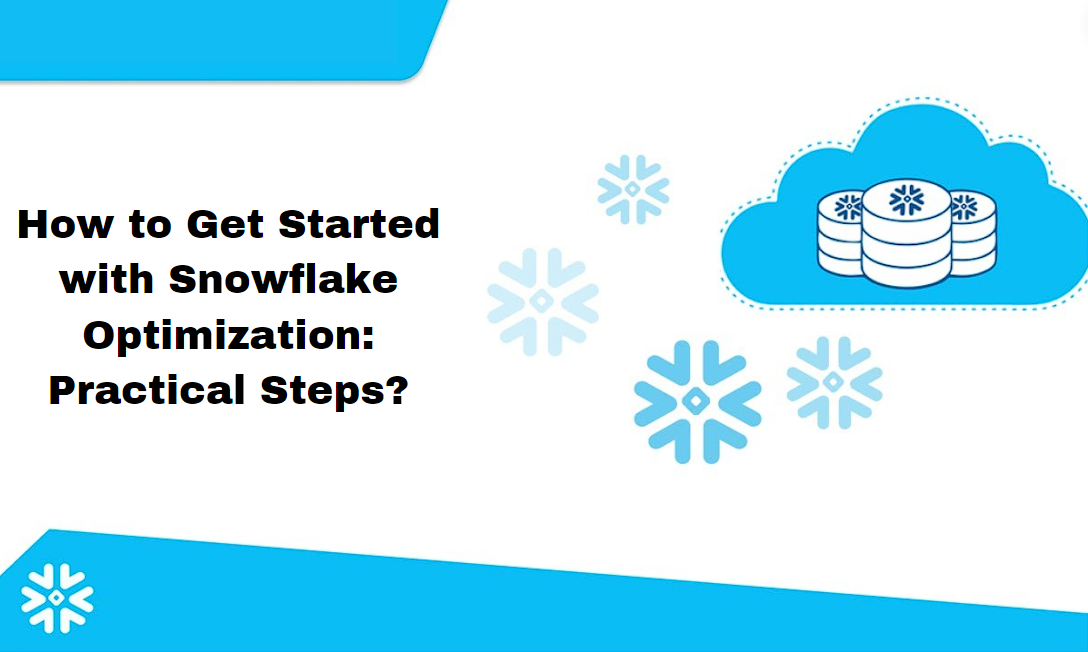In this data-driven world, organizations are constantly seeking ways to improve the performance and efficiency of their data warehouses. Snowflake, a cloud-based data warehousing platform, has gained popularity for its scalability and powerful features. To harness its full potential, one must understand how to optimize it effectively. This article explores practical steps to get started with Snowflake optimization, helping you maximize the performance of your data warehouse.
Understanding The Process:
Before diving into the optimization process, it’s essential to grasp the fundamentals of Snowflake architecture. It utilizes a multi-cluster, shared-data architecture that separates storage from computing, enabling concurrent processing and scalability. This architecture forms the basis for optimization strategies you’ll explore in the following sections.
Query Performance Tuning:
To kickstart your optimization journey, focus on query performance tuning. Efficient queries are vital for speeding up data retrieval and analysis. Here are some tips:
- Analyze Query Execution Plans: Use Snowflake’s EXPLAIN command to examine query execution plans and identify potential bottlenecks. Understanding how it processes your queries is crucial for optimization.
- Utilize Indexing: Create and maintain appropriate indexes on columns frequently used in your queries. This can significantly reduce the time it takes to retrieve specific data.
- Optimize Joins: Minimize the number of joins in your queries and choose the appropriate join type (inner, outer, etc.) to avoid unnecessary computational overhead.
Data Storage Best Practices:
Efficient data storage is a cornerstone of this process. Follow these guidelines to ensure your data is organized effectively:
- Clustering Keys: Choose appropriate clustering keys for your tables to physically order data, which can improve query performance significantly.
- Data Compression: Utilize automatic data compression to reduce storage costs and improve query speed.
- Data Sharing: If applicable, consider using its data sharing capabilities to share data securely with external partners or departments without duplicating data.
Resource Scaling:
It offers automatic and manual resource scaling options to adapt to varying workloads. Here’s how you can optimize resource allocation:
- Auto-Scale: Enable automatic scaling to dynamically adjust the number of virtual warehouses (compute clusters) based on workload demand. This ensures optimal performance without manual intervention.
- Manual Scaling: For more control, manually configure the number of virtual warehouses and size to match specific workload requirements. This can be useful for predictable, consistent workloads.
Data Ingestion and ETL:
Efficient data ingestion and ETL (Extract, Transform, Load) processes are crucial for the optimization. Follow these recommendations:
- Use Snowpipe: Snowpipe is its native, automatic data ingestion service. It enables real-time data loading, reducing latency and improving data availability.
- ELT Approach: Consider shifting your ETL processes to Snowflake, as it allows you to leverage its compute resources for transformations, resulting in faster data processing.
Monitoring and Performance Tuning:
Continuous monitoring and performance tuning are essential to maintaining this process over time. Here’s what you should do:
- Query Monitoring: Regularly monitor query performance using its built-in tools and analyze query history to identify and address performance issues
- Workload Management: Implement policies to prioritize and allocate resources to critical workloads, ensuring consistent performance.
Conclusion:
Using this process for your data warehousing needs can immensely enhance the performance and efficiency of your data analytics. By understanding the architecture, tuning query performance, following data storage best practices, optimizing resource scaling, and fine-tuning data ingestion and ETL processes, you can unlock the full potential of Snowflake. Remember that Snowflake optimization is an ongoing process requiring continuous monitoring and adjustments to adapt to changing workloads and data requirements. With these practical steps, you’ll be well on your way to harnessing its power and making the most of your data.
To read more blogs:
Benefits of Using My Kohl’s Card: Why Every Kohl’s Shopper Should Register
